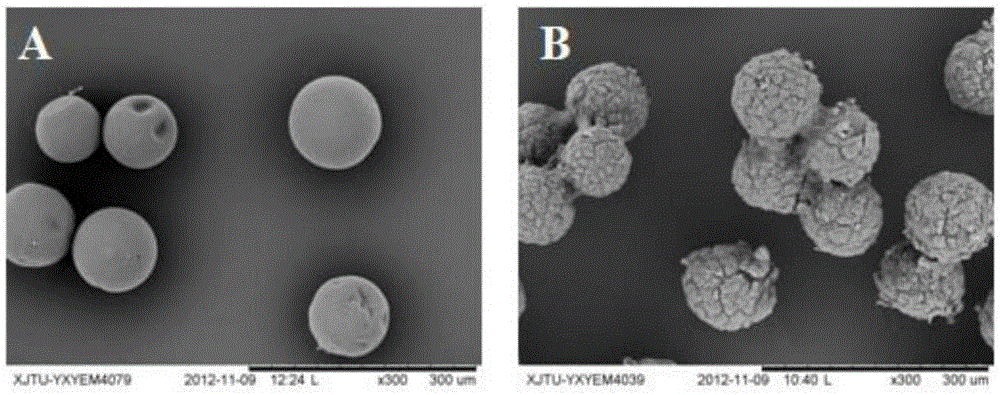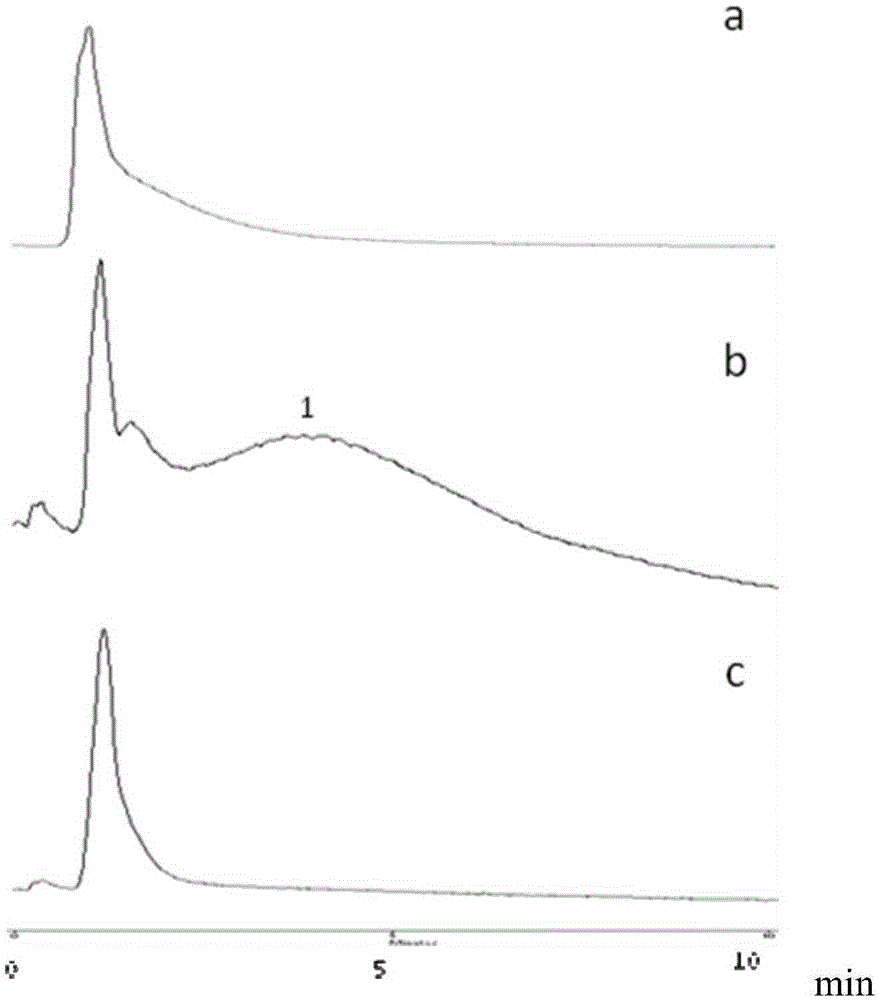A kind of cell stationary phase based on microcarrier cells and preparation method thereof
A cell immobilization and microcarrier technology, applied in the field of cell membrane chromatography, can solve the problems that the medium has a certain influence and the cells are toxic, and achieve the effect of improving specificity and large specific surface area.
- Summary
- Abstract
- Description
- Claims
- Application Information
AI Technical Summary
Problems solved by technology
Method used
Image
Examples
preparation example Construction
[0030] The preparation method of the cell stationary phase based on microcarrier cells provided comprises the following operations:
[0031] 1) Place the microcarriers in a siliconized culture vessel, activate and sterilize, then add DMEM medium overnight, discard the original medium before use, and replace with warm DMEM medium at 37°C to make a microcarrier suspension ;
[0032] 2) Put the microcarrier suspension into the culture container, inoculate the cell suspension, and then add DMEM culture solution; place the culture container upright in CO 2 Cultivate in the incubator for 2 to 3 hours, remove the rotation and shake for 1 to 2 minutes; then shake once every 1 to 2 hours, and replace the medium every 12 to 24 hours;
[0033] 3) After the cells adhere to the wall and grow on the microcarrier, take the cell suspension in the logarithmic phase of the adherent growth on the microcarrier, add paraformaldehyde solution with a mass concentration of 4%, fix at room temperatur...
Embodiment 1
[0037] The preparation of the FGFR4 cell chromatographic column based on microcarrier cells comprises the following operations:
[0038] 1) Processing of microcarriers
[0039] Pretreatment of glassware: wash and dry all glassware used for pretreatment of microcarriers, soak in 5% simethicone-ethyl acetate solution for uniform siliconization for 4 hours, pick up and dry in the air, and use ultra- Wash 3 times with pure water, soak overnight, and dry for later use.
[0040] Microcarrier Cytodex treatment: Weigh 0.2g microcarrier Cytodex into a siliconized beaker, wash twice with 20mL calcium and magnesium-free PBS (PH=7.4), replace with fresh PBS and soak overnight, autoclave, discard PBS , replace with fresh DMEM medium (containing 0.3mg / l G418, 10% FBS) and soak overnight, discard the original medium before use, replace with a proper amount of warm medium at 37°C, and adjust the medium content in the bottle The content is 20mg / ml.
[0041] Treatment of the surface of the c...
Embodiment 2
[0055] The difference from Example 1 is that human umbilical vein endothelial cells (ECV304) were used instead of fibroblast growth receptor (FGFR4) cells, ECV304 cells were cultured in DMEM medium, and other operations were prepared according to Example 1 to prepare ECV304 cell chromatography column.
[0056] Further, use the prepared ECV304 chromatographic column to analyze the retention of emodin on the ECV304 cell chromatography, as follows:
[0057] Preparation of emodin reference solution: take an appropriate amount of emodin, add methanol to dissolve and set the volume to 10ml, and obtain a concentration of 0.5mg / ml.
[0058] Mobile phase: 0.8%NaH 2 PO 4 -0.974%Na 2 HPO 4 (20:80), wherein NaCl 0.432g is added per 100ml;
[0059] Chromatographic column: 10mm×1mm;
[0060] Flow rate: 0.2ml / min; detection wavelength: 254nm.
[0061] Test results such as image 3 As shown, wherein a is emodin (blank microcarrier), b is emodin (microcarrier with cells), and c is metha...
PUM
| Property | Measurement | Unit |
|---|---|---|
| diameter | aaaaa | aaaaa |
| diameter | aaaaa | aaaaa |
Abstract
Description
Claims
Application Information
 Login to View More
Login to View More - R&D
- Intellectual Property
- Life Sciences
- Materials
- Tech Scout
- Unparalleled Data Quality
- Higher Quality Content
- 60% Fewer Hallucinations
Browse by: Latest US Patents, China's latest patents, Technical Efficacy Thesaurus, Application Domain, Technology Topic, Popular Technical Reports.
© 2025 PatSnap. All rights reserved.Legal|Privacy policy|Modern Slavery Act Transparency Statement|Sitemap|About US| Contact US: help@patsnap.com



